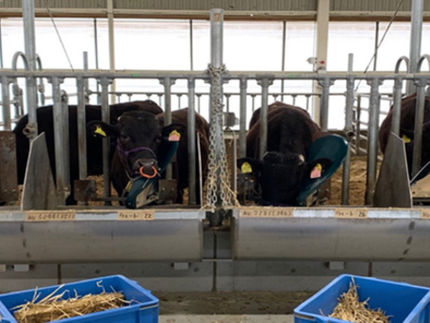Making apple spirits taste better
Advertisement
The holiday season is a time of celebrations and festive drinks, some of which are made with apple liquors. These classic spirits have a long history, and surprisingly, many decisions about their processing are still subjectively determined. Now, researchers in ACS Food Science & Technology report that measuring the liquor’s conductivity could give a more objective assessment, and they also found a way to make the process more energy-efficient.

Bild von congerdesign auf Pixabay
For hundreds of years, apples have been a good base for liquors, such as Calvados in France and applejack in the U.S., because they’re full of sugar and desirable flavors. As the mashed fruit ferments, alcohol evolves along with additional flavor compounds, which add to the complex taste of the final liquor. Distilling the fermented apples with heat concentrates the alcohol and removes unpleasant fermentation byproducts, such as carboxylic acids that can impart unclean, rancid, cheesy and sweaty flavors. Most producers use batch columns to make apple spirits because it provides a clean-tasting, high-alcohol distillate in a large volume. But the exact time to stop the distillation process — and achieve the most flavorful liquor — has been uncertain. Previously, Andreas Liebminger and colleagues showed that a rapid increase in apricot brandy distillate’s conductivity reliably indicates the ideal time to stop the distillation. So, the researchers wanted to see if this would also hold for apple liquors.
The researchers crushed and fermented apples into a mash, which they distilled in a German-style batch column still. As the mash was heated, they continuously monitored the conductivity of the distillates and measured the levels of nine carboxylic acids. They found that as the conductivity rose, so did the levels of the bad-tasting carboxylic acids. In additional tests to find a more energy-efficient distillation strategy, they noted that heating up the mash too quickly produced a distillate with lower conductivity and fewer of the unwanted flavor compounds, but it smelled bland. In contrast, raising the temperature of the still’s cooling tower produced a liquor with a good aroma intensity, while also reducing the carboxylic acid levels. By keeping the cooling tower a few degrees warmer, the researchers didn’t expend as much energy overall compared to the conventional approach. The researchers say that monitoring the conductivity in the distillates afforded them a simple way to identify the best conditions for producing apple spirits with the most desirable quality and taste.



























































